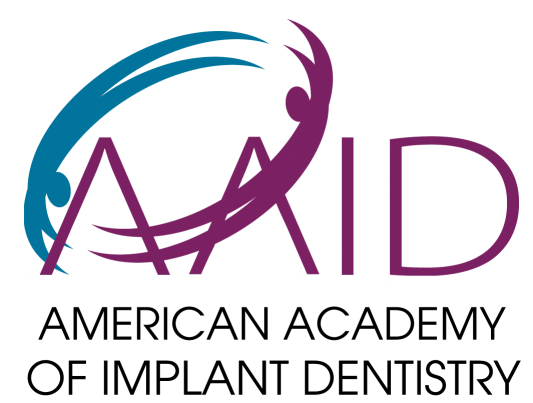At Lansdowne Family Dental, we prioritize not only the effectiveness of the Invisalign treatment plans we offer but also the comfort and satisfaction of our patients. A common question we encounter is “Does Invisalign hurt?” This query is quite understandable as many are looking to straighten their teeth with the least amount of discomfort. In this article, we will explore various facets of discomfort associated with Invisalign, and provide insights to help you make an informed decision.
Introduction: Easing into Invisalign
Embarking on the journey of orthodontic treatment is a big step. The idea of aligning one’s teeth using Invisalign brings about notions of a hassle-free and less painful experience when compared to traditional braces. However, like any dental procedure, there’s a level of discomfort that comes with the process. The key lies in understanding what to expect and how to manage this discomfort to ensure a smooth, hassle-free treatment journey.
Let’s find out why we are the best Ashburn Dentist
The Science Behind Invisalign Discomfort
Invisalign aligners work by applying consistent pressure on the teeth to shift them gradually into the desired position. This pressure, while necessary for achieving the desired results, can cause some level of discomfort, especially in the initial stages:
- Pressure Application: The primary source of discomfort stems from the pressure applied to the teeth. Each new set of aligners brings a new configuration that the teeth need to adjust to.
- Tooth Movement: As the teeth move to their new positions, the surrounding tissues and nerves respond, which may result in a sensation of pressure or mild soreness.
Comparing Discomfort: Invisalign vs Traditional Braces
The modern approach of Invisalign has been designed with the patient’s comfort in mind. Let’s compare this innovative solution with traditional braces:
- Material: Invisalign’s SmartTrack® aligner material is crafted to apply a gentle, continuous force, which usually results in less discomfort compared to the manual adjustments required with traditional braces.
- Adjustment Frequency: Traditional braces require more frequent adjustments by an orthodontist, often leading to spikes in discomfort. In contrast, the gradual pressure applied by Invisalign aligners tends to cause less discomfort over time.
In the next sections, we will explore the common causes of discomfort with Invisalign, initial experiences, and effective tips to manage and reduce any associated discomfort. Your journey towards a perfect smile should be as comfortable and informed as possible. Stay tuned as we delve deeper into ensuring a smooth Invisalign experience.
Let’s find out why we are the best dentist in Leesburg, VA
Common Causes of Discomfort with Invisalign
Invisalign is a remarkable solution for those looking to straighten their teeth discreetly. However, like any orthodontic treatment, it comes with its share of discomfort, especially during the initial phase. Here’s a breakdown of common causes:
- Aligner Fit: When you first receive a new set of aligners, they may feel tight or snug around your teeth. This is because they are designed to apply pressure to move your teeth gradually.
- Attachments: These small devices help the aligners grip your teeth better, but they can cause slight discomfort initially as your mouth adjusts to their presence.
Initial Discomfort: What to Expect
The initial days with a new set of aligners can be accompanied by some discomfort, which is a normal part of the adjustment process:
- Sensitivity: As per a 2005 study, 83% of patients reported that the sensitivity experienced with Invisalign disappeared within a week of being fitted with new aligners.
- Temporary Discomfort: Typically, it takes about a week for someone to get used to their Invisalign aligners. During this phase, the teeth move to a new position, causing temporary discomfort.
Tips to Reduce Invisalign Discomfort
There are several practical tips to alleviate discomfort associated with Invisalign:
- Cold Water: Rinse your mouth with cold water to help ease any soreness.
- Over-the-Counter Pain Relievers: Use over-the-counter pain relievers as directed, especially during the initial days of wearing a new set of aligners.
- Chew Toys for Invisalign: These can help in seating the aligners properly and may alleviate discomfort.
How Long Does The Discomfort Last?
Every patient’s experience is unique, but it’s comforting to know that any discomfort experienced is likely to be temporary:
- Adjustment Period: Most patients report getting used to the aligners within a week or two.
- Temporary Nature: The discomfort is temporary and usually subsides as your mouth adjusts to the aligners.
In the upcoming sections, we will delve into real experiences shared by patients and address common concerns through a FAQ section. Armed with this knowledge, you can embark on your Invisalign journey with confidence.
FAQs: Addressing Your Concerns
- How can I alleviate Invisalign’s discomfort?
- Utilizing over-the-counter pain relievers, adhering to the recommended wear time, and using Invisalign chewies can help ease discomfort.
- Is the discomfort a sign of effectiveness?
- While discomfort is a sign that your teeth are moving toward the desired position, severe pain should be reported to your orthodontist.
- Can I remove my aligners if I experience discomfort?
- It’s essential to wear your aligners for the recommended 20 to 22 hours per day, even if some discomfort is experienced. However, if severe pain occurs, consult with your orthodontist.
- Will every new set of aligners cause discomfort?
- It’s common to experience some level of discomfort with a new set of aligners as your teeth adjust to the new configuration. However, this tends to lessen with time.
- What are some tips for adjusting to new aligners?
- Switch to new aligners before bedtime to allow your teeth to adjust overnight, and use a cold compress to alleviate any soreness.
- Are there any long-term effects of Invisalign discomfort?
- The discomfort associated with Invisalign is temporary, and there are no reported long-term adverse effects.
Conclusion
Embarking on the Invisalign journey is a decision that comes with many considerations, one of which is the level of discomfort. At Lansdowne Family Dental, we strive to provide a comprehensive understanding of what to expect during your Invisalign treatment. While some level of discomfort is normal, the benefits of a straighter, healthier smile are well worth it. We’re here to guide you every step of the way, ensuring a comfortable and successful orthodontic journey.






